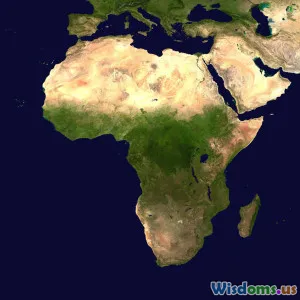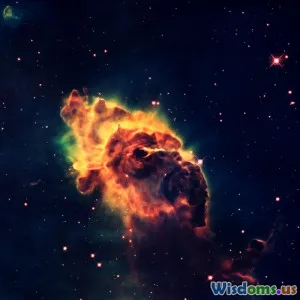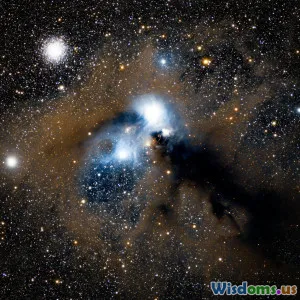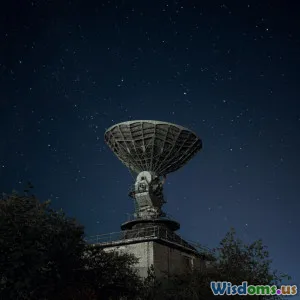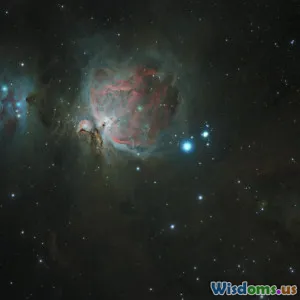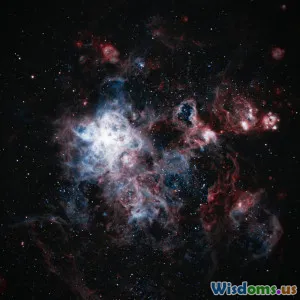
Why the James Webb Telescope is Rewriting Our Origin Story
8 min read Explore how the James Webb Telescope is transforming our understanding of the universe and our cosmic origins. (0 Reviews)
Why the James Webb Telescope is Rewriting Our Origin Story
Introduction
Throughout history, humanity’s quest to understand our origins has been deeply intertwined with observations of the cosmos. With each leap in telescope technology—from Galileo’s first lens to the Hubble Space Telescope—we’ve peeled back layers of the universe’s story. Now, the James Webb Space Telescope (JWST) is heralding a new era. More powerful and innovative than its predecessors, JWST is not just opening a new window; it is rewriting the origins narrative itself. This article explores how JWST’s revolutionary capabilities and discoveries are reshaping our understanding of the universe, from the birth of the first stars to the very foundations of life.
The Powerhouse: What Makes JWST Unique?
JWST is often called the successor to the Hubble Space Telescope, but to call it a mere replacement seriously understates its capabilities. Launching on December 25, 2021, JWST is positioned 1.5 million kilometers from Earth at the second Lagrange Point (L2), where it enjoys a stable environment for ultra-sensitive observations.
Infrared Eyes on the Universe’s Dawn
Unlike Hubble, which captures mostly visible and ultraviolet light, JWST observes predominantly in the infrared spectrum. This shift is critical because light from the earliest cosmic epochs has redshifted into infrared wavelengths due to the expanding universe. JWST’s large, 6.5-meter diameter mirror and advanced instruments allow it to detect faint heat signatures from the first galaxies and stars that formed over 13 billion years ago.
State-of-the-Art Technology
Equipped with instruments like the Near Infrared Camera (NIRCam), Mid-Infrared Instrument (MIRI), Near Infrared Spectrograph (NIRSpec), and Fine Guidance Sensor/Near Infrared Imager and Slitless Spectrograph (FGS-NIRISS), JWST can image, spectrum-map, and analyze celestial objects with unprecedented accuracy.
Rewriting Cosmic History: Breakthrough Discoveries
Peering Back to the Universe’s First Billion Years
One of JWST’s landmark capabilities is capturing direct evidence from epochs previously unreachable. Already, it has identified galaxies that formed as early as 300-400 million years after the Big Bang, a time when the universe transitioned from the “dark ages” to light.
For example, JWST’s early release observations revealed the galaxy GLASS-z13 at an astonishing redshift of 13.1. This means we are seeing it as it existed roughly 300 million years post-Big Bang—much earlier than Hubble’s limits. Discoveries like this force astronomers to revisit models of how quickly stars and galaxies could have formed.
Challenging Models of Galaxy Formation
The galaxies JWST has spotted are surprisingly mature and massive, with structured shapes and unexpectedly high rates of star formation. This contradicts conventional wisdom that early galaxies were small, irregular, and primitive. The new data suggests rapid and efficient processes driving star and planet formation in the universe’s infancy.
Unlocking the Secrets of Star and Planet Formation
JWST’s infrared vision penetrates thick cosmic dust clouds and nebulae where stars and planets are born. Its detailed spectral analysis of protoplanetary disks around young stars gives insight into chemical compositions and physical conditions conducive to planet formation—providing clues to the origins of our own solar system.
For instance, observations of the Carina Nebula show zones rich in organic molecules and water vapor—essential ingredients for life as we know it. Such information narrows the timescale and the environmental conditions for potential habitable worlds to emerge.
Revealing the Building Blocks of Life
Beyond cosmology, JWST targets exoplanet atmospheres, analyzing their chemical makeup for biosignatures, such as water vapor, methane, and carbon dioxide. The spectrographs on board can distinguish these gases’ faint signatures, opening the path for astrobiology to answer one of humanity’s deepest questions: Are we alone?
Recent atmospheric characterization of exoplanets like WASP-96b and the TRAPPIST-1 system indicates complex atmospheres where organic chemistry is possible, hinting that life-friendly conditions may be more common than previously thought.
Insights from Experts: Voices Behind the Telescope
Dr. Jane Rigby, JWST Operations Scientist, noted, “JWST isn’t just an eye on the cosmos—it’s a time machine. It’s fundamentally changing how fast and early structures in the universe took shape, and that has profound implications for everything from dark matter theories to the conditions needed to form habitable worlds.”
Similarly, astrophysicist Dr. Avi Loeb commented, “JWST’s findings push us to update our narratives on cosmic evolution. It challenges old assumptions and inspires new questions about our place in the universe.”
Looking Forward: The Future of Discovery
JWST’s mission is planned for a minimum of 10 years, promising a wealth of data that will feed generations of astronomers and change textbooks for decades. Upcoming projects include more detailed surveys of exoplanet atmospheres, star birth regions, and deep-field observations mapping galaxy evolution across cosmic time.
Researchers anticipate that JWST’s data combined with efforts from next-generation ground observatories and other space missions will offer a holistic understanding of cosmic origins that was impossible before.
Conclusion
The James Webb Space Telescope stands as a monumental leap in humanity’s quest to comprehend our origin story. Its ability to see back into the universe’s earliest moments challenges long-held theories about galaxy formation and star birth, while opening tantalizing possibilities in the search for life beyond Earth. By illuminating the cosmos’s infancy and uncovering the chemical pathways leading to life, JWST reshapes not just what we know but fundamentally our story of existence.
As we continue to decode the universe’s secrets with JWST, we are reminded that the cosmos is ever more wondrous and mysterious than we imagined—and our place within it is a continuously unfolding chapter waiting to be understood.
References:
- NASA James Webb Space Telescope Official Site
- Rigby, J., et al. (2023). "Early JWST Observations and Galactic Formation." Astronomical Journal.
- Loeb, A. (2023). "Implications of JWST Data on Cosmic Evolution." Astrophysics Today.
- ESA Science & Technology: JWST and its Instruments
Rate the Post
User Reviews
Popular Posts










